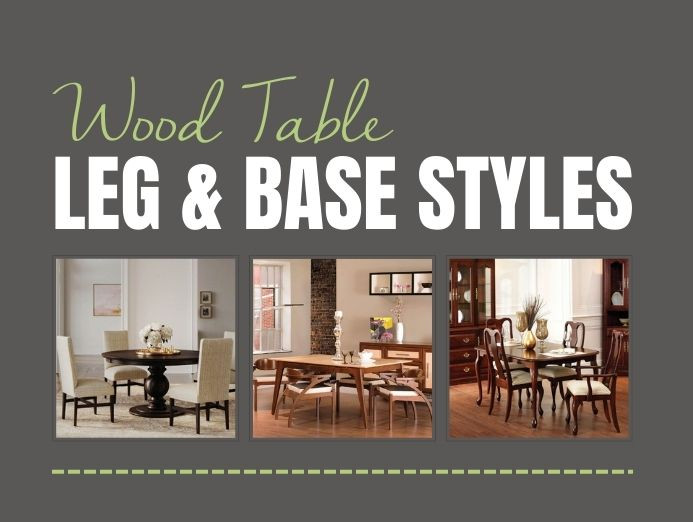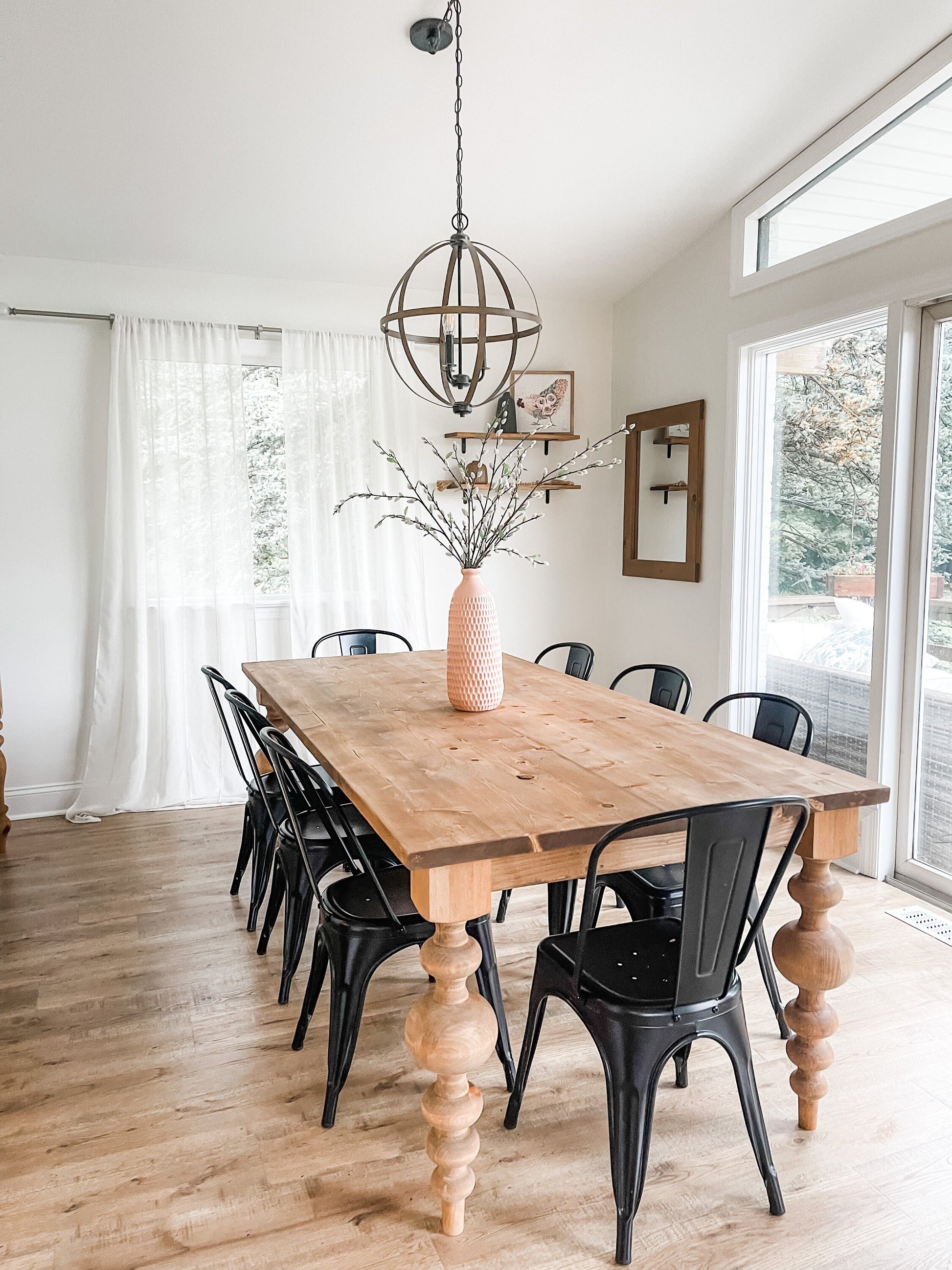The Top Trends in Dining Room Table Legs You Need to Know
The Top Trends in Dining Room Table Legs You Need to Know
Blog Article
From Typical to Modern: Discover the Ideal Dining-room Table Legs for Your Style
The selection of eating room table legs plays an essential role in specifying the general personality of your room, linking the gap in between standard workmanship and modern aesthetic appeals. While classic designs such as cabriole and turned legs evoke a feeling of ageless refinement, contemporary styles like hairpin and geometric alternatives offer a possibility for striking aesthetic interest. Evaluating the best balance between these styles calls for a nuanced understanding of your existing decor and individual taste. As you think about these aspects, the question continues to be: exactly how can you perfectly integrate these diverse leg designs to develop an unified dining experience?
Recognizing Table Leg Styles
The selection of eating space table leg styles can dramatically affect both the looks and performance of the space. Each leg style adds one-of-a-kind visual elements and sensible attributes, catering to varied style choices and usage demands. Comprehending these designs is essential for selecting the ideal eating table that aligns with your general interior layout vision.
As an example, conical legs use a tidy, classic look that can boost a space's sophistication, while stand bases provide security and take full advantage of legroom, making them perfect for smaller areas. Hairpin legs, a characteristic of mid-century modern design, introduce a commercial panache, allowing for a ventilated, open feeling. Trestle legs evoke rustic beauty, supplying robust support and a sense of timelessness.
Wood legs can bring heat and appearance, whereas metal alternatives typically share a streamlined, contemporary ambiance. Inevitably, recognizing table leg styles is necessary for creating a natural dining area that mirrors personal style while making sure usefulness and comfort.
Traditional Table Leg Options
When choosing dining-room table legs, typical options frequently personify timeless style and craftsmanship. These layouts show a rich heritage and a commitment to high quality, making them perfect for those that appreciate traditional aesthetic appeals.
Among the most legendary standard leg styles is the cabriole leg, characterized by its graceful rounded form. This style typically features ornamental makings and is most generally located in Queen Anne and Chippendale furnishings. One more preferred alternative is the transformed leg, which flaunts a series of smooth, rounded forms that offer a timeless look while maintaining stability.
In addition, the straight leg, while basic, provides a strong and unadorned structure that can blend seamlessly with a selection of tabletop styles. For those attracted to ornate detailing, claw-and-ball feet legs evoke a sense of splendour and can serve as a magnificent prime focus in any eating space.
Lastly, pedestal bases, although not strictly legs, supply an alternate traditional alternative that enables ample legroom and can be wonderfully sculpted. Each of these conventional leg styles adds to the total ambiance of a dining-room, weding function with visual charm.

Modern Table Leg Designs
Modern table leg styles offer a varied variety of designs that stress ingenious products and tidy lines. These designs commonly prioritize performance while acting as striking focal factors within an eating space. Minimalist aesthetic appeals like it are prevalent, with legs crafted from products such as metal, glass, and crafted wood, which add to a ventilated and modern feel.
One preferred design is the barrette leg, defined by its slim, conical framework that supplies security without frustrating the tabletop (dining room table legs). This style is usually discovered in mid-century modern furniture and can effortlessly complement different table forms. Another fad is using geometric shapes, where legs may take on asymmetrical or angular types, including visual passion and a touch of artistry

Blending Styles for Distinct Areas
Often, home owners seek to produce one-of-a-kind dining rooms that reflect their personal design by blending numerous design aspects. This method allows for the unification of diverse appearances, leading to an unified yet distinct setting. For example, pairing a rustic wooden table with sleek, modern-day steel legs can produce an appealing contrast that boosts the space's total allure.
Furthermore, integrating vintage table legs with contemporary table tops can stimulate a feeling of background while preserving a modern-day sensibility. Such mixes not just display specific preference yet additionally motivate imagination, permitting homeowners to curate a space that really feels both personal and welcoming.
Shade plays an important duty in this mixing procedure; choosing table legs that enhance or contrast with the existing shade scheme can enhance visual rate of interest. For example, whitewashed legs can soften the daring of a dark table surface area, developing a balanced visual.
Tips for Selecting the Right Legs
Selecting the right table legs is important for achieving both capability and aesthetic appeal in your dining space. Begin by taking into consideration the general style of your room. Typical settings take advantage of legs that include complex makings or transformed styles, while contemporary areas might ask for smooth, minimal designs.
Following, assess the elevation and stability of the legs. dining room table legs. Basic table vary between 28 to 30 inches in elevation, so make sure the legs match this measurement for convenience. In addition, robust products, such as hardwood or steel, can boost stability and durability
Assess the leg shape also-- alternatives include directly, tapered, or stand styles. Straight legs provide a find more information traditional look, while conical legs can add a touch of beauty. Pedestal bases supply adequate legroom and are suitable for smaller sized spaces.
Conclusion
In recap, picking the perfect dining-room table legs requires careful consideration of both modern and traditional designs. Standard options such as cabriole and turned legs use timeless beauty, while contemporary layouts like barrette and geometric forms provide a modern touch. By balancing leg style, elevation, and product with the general decor, a natural and inviting go to my blog ambience can be accomplished. Ultimately, the picked table legs ought to show the preferred visual, enhancing the eating experience within the room.
The variety of eating room table leg designs can substantially influence both the aesthetics and functionality of the area. Ultimately, understanding table leg designs is important for developing a cohesive eating area that reflects personal design while guaranteeing usefulness and comfort.One of the most famous typical leg designs is the cabriole leg, characterized by its graceful curved form. Straight legs offer a traditional appearance, while tapered legs can add a touch of elegance.In recap, choosing the excellent dining room table legs calls for cautious consideration of both modern and conventional designs.
Report this page